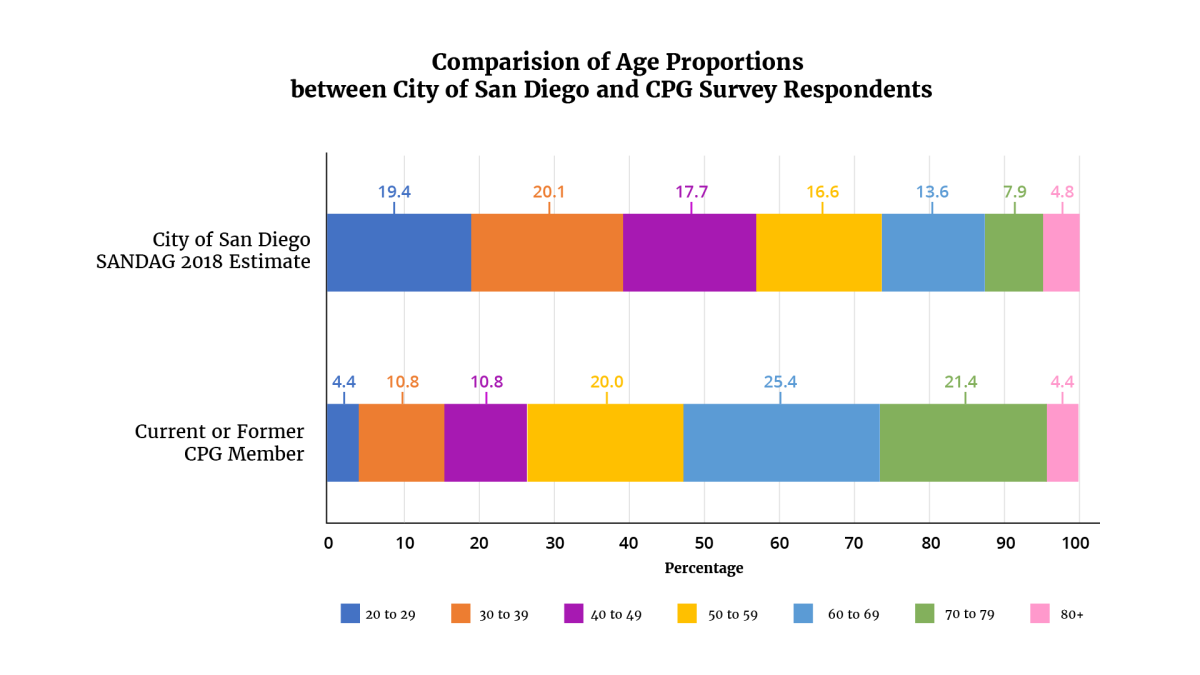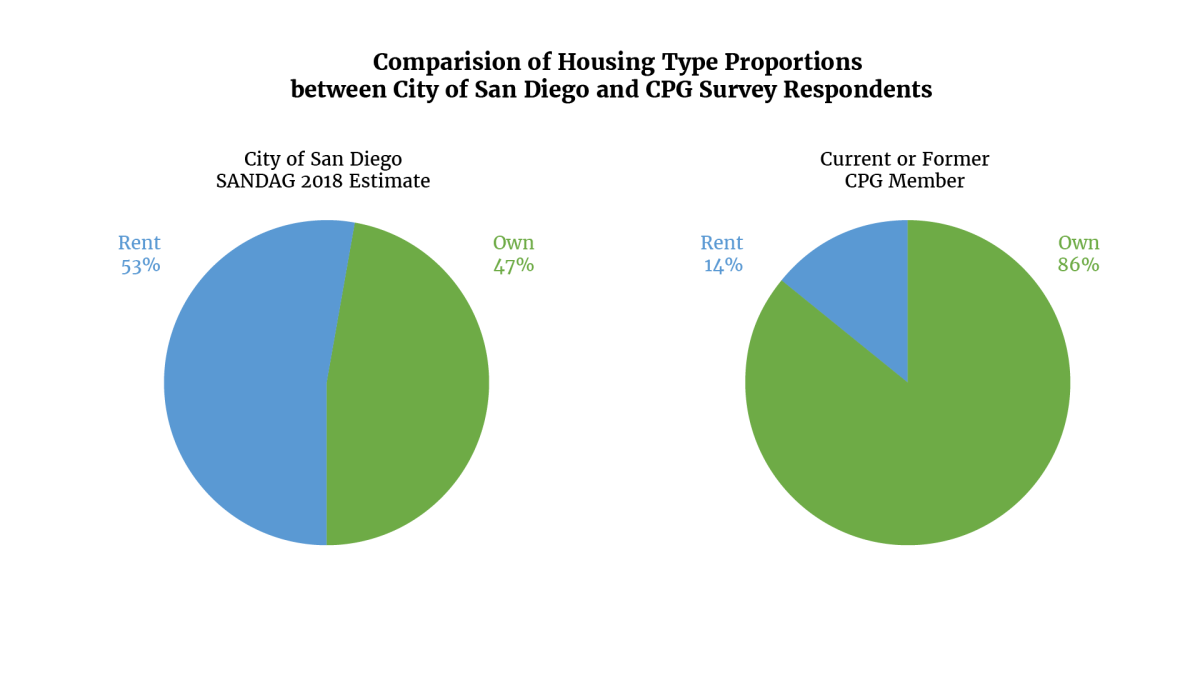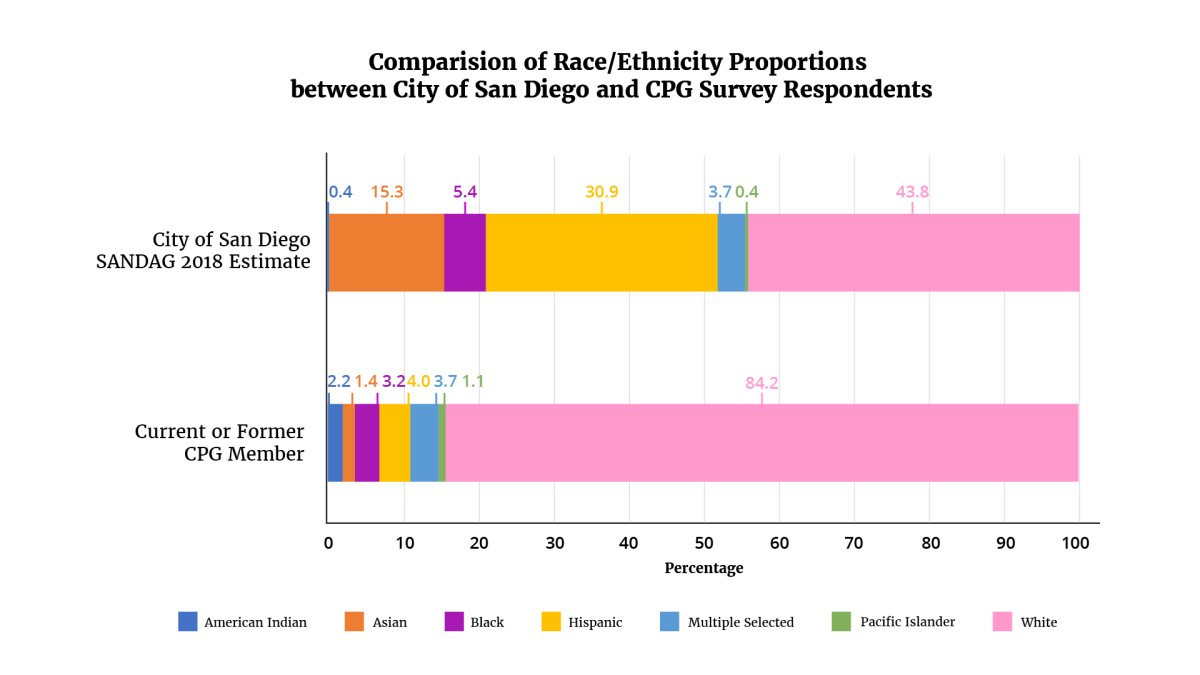Underrepresented Groups
Planning Groups
Community involvement in planning has been long-standing in the City of San Diego. The City Council adopted policies in the 1960s and 1970s that established and recognized community planning groups as formal mechanisms for community input in the land use decision-making processes. The 41 recognized community planning groups provide community members with an opportunity for involvement in advising the City Council, the Planning Commission, and other decision-makers on development projects, general or community plan amendments, rezonings and public facilities.
In 2019, the City Planning Department shared an online survey with former and current planning group members, as well as the public, to determine how to enhance community engagement on land use matters. The survey collected demographics of planning groups, which were then compared to demographics gathered in a 2018 City of San Diego Resident Survey. Although the community planning group survey was not considered statistically valid and respondents self-selected, likely due to their involvement and strong interest on planning groups, it offered insight into the point-in-time makeup of community planning groups.



Based on this self-reporting, a lower proportion of community planning group respondents were renters, lived in multi-unit homes (apartments, condominiums, duplexes, etc.), identified as female or identified as American Indian, Asian, Black, Hispanic, or multiracial than the city’s total population. Planning group respondents also had lower proportions of younger people than the overall city population. These data suggest that underrepresented populations within planning groups could include young people, renters, women and people of color.
To the greatest extent possible, community planning group members should be representative of the population of the communities they represent so that decision-makers can have confidence that the planning group represents a full range of interests in the community as addressed in Council Policy 600-24. In 2022, the City Council updated Council Policy 600-24 to further address community planning group roles and responsibilities with respect to inclusive public participation. The changes to Council Policy 600-24 focused on improving transparency, broadening community representation and reflecting planning groups' legal status as independent organizations. Planning groups were asked to consider designating seats for renters, stakeholders and business representatives to ensure voting members are representative of the broader community, and to collect demographic data of existing and new planning group voting members and the community at large and submit to the City as part of its annual report.


 Inclusive Public Engagement Guide
Inclusive Public Engagement Guide